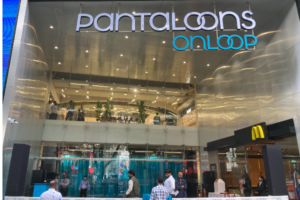Uber launches MOVEMENT in India
3 min readWith an aim to help civic authorities, traffic police, researchers, think tanks and policymakers discover ways to apply data to make better infrastructure, urban mobility planning and traffic management decisions, Uber today launched MOVEMENT in India – a free tool which uses Uber’s anonymised data from millions of trips to help urban planners redefine the urban mobility landscape in their cities. As a public tool focused on delivering insights and solutions that are openly accessible to a wider audience, the launch of MOVEMENT across the 4 cities of Delhi, Mumbai, Bangalore and Hyderabad is monumental: This is the first ever comprehensive data sharing exercise of traffic patterns of its scale in India.
Everyday millions of Indians use Uber to get around their cities – whether it is to get to their nearest railway or metro station, return home from work or for point to point connectivity. By developing comprehensive data maps and grids for each of the 4 Indian cities and cross tabulating the insights from millions of Uber trips, some fascinating data about how cities move at different times of the day, week and year have been aggregated

. By allowing civic authorities, local governments, transportation researchers, technology and urban infrastructure think tanks, academia etc to mine the data, Uber hopes to jointly make a positive impact on data-driven decision making, congestion reduction, transportation policy and future urban infra investments.
Uber Movement helps in shaping future of mobility in cities by:
|
Uber shares the same goals as the 31+ cities in India and the 600+ cities we serve globally and is focussed on addressing the same challenges – tackling congestion and pollution, reducing individual car ownership, complementing public transport, promoting efficient use of existing mobility assets and ride sharing. Keeping this in mind, MOVEMENT was introduced in 10 cities last year.
Dara Khosrowshahi, CEO, Uber, today formally launched the second phase of MOVEMENT, making the data available for 4 Indian cities for the first time, and marking a commitment to continued research and investments in India and emerging markets. Overall, the 12 shortlisted cities for MOVEMENT’s second phase span across 5 continents and 7 countries, namely: Delhi, Mumbai, Bangalore Hyderabad, Amsterdam, Brisbane, Cairo, Melbourne, Nairobi, Perth, Pittsburgh, and Toronto.
Commenting on the launch Prabhjeet Singh, Regional General Manager, Uber India & South Asia said “We are delighted to bring Uber Movement to India, an exciting new tool that has open data architecture and collaborative spirit at its heart. This will encourage data-driven policy-making to solve for some of the biggest challenges faced by our cities. We are confident that by collaboratively leveraging the power of open data, governments, industry and academia can together create a real alternative to a world that moves like a jam and looks like a parking lot and help redefine the future of urban mobility.“
The positive reception for Movement, in several cities so far, ranging from Manila to Cincinnati is a testament to its potential to help solve challenging mobility issues. Among several projects where MOVEMENT’s data was used to improve accessibility is:
- the measurement of travel times from supermarkets in Cincinnati
- Impact of Washington DC’s metro rail maintenance disruption on commute pattern changes and local traffic
- Impact of the 3-month closure of London’s tower bridge on travel times
While these projects set an example of how determining the problem statement for the data can unlock insights, the universal nature of this approach opens interesting possibilities where it can be applied to any given set of facilities or services – be it traffic patterns in Gurugram or monsoon led disruptions in Mumbai.



